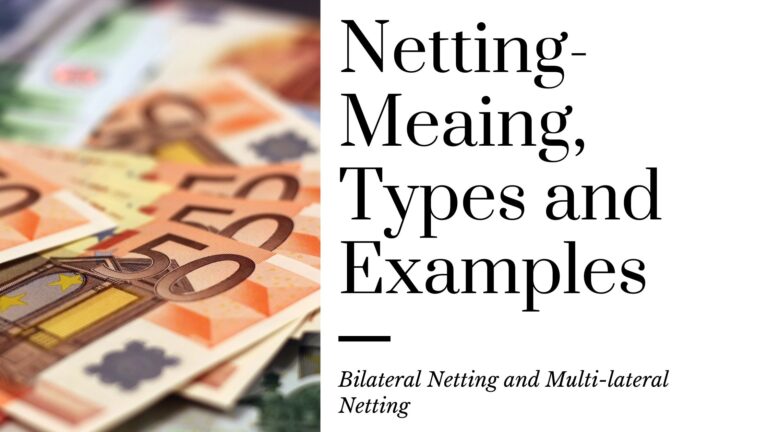Table of Contents
Meaning
The term foreign exchange exposure is relevant for the companies involved in import or export of goods or services, or having transactions denominated in foreign currency.
If a company has foreign exchange exposure then there is always a risk that the rate of foreign currency may fluctuate adversely and that may also cause serious losses to the company.
Foreign exchange exposure may be in the form of a transaction or asset or liabilities of the company. For example, ABC Ltd, an Indian Company, bought machinery from the USA for $ 1, 00,000. Current rate of exchange is $1 = Rs. 70, accordingly ABC Ltd is required to pay Rs. 70,00,000 for buying the machine. Payment is required to make within 1 month.
Due to unforeseen circumstances exchange rate change adversely within the period of 1 month. At the end of the 1 month exchange rate is $1 = Rs. 75, therefore the company is required to pay Rs. 75, 00,000.
You can see that fluctuation in exchange rate how badly affected the above transaction. Now ABC Ltd is required to pay additional Rs. 5,00,000 (Rs. 75,00,000 – Rs. 70,00,000).
Every company, having foreign exchange exposure, is required to maintain a proper foreign exchange risk management system to mitigate the risk of fluctuation in exchange rate.
Foreign Exchange Exposure vs. Foreign Exchange Risk
For a better understanding of the concept of foreign exchange exposure we need to differentiate Foreign Exchange Exposure and Foreign Exchange Risk.
Foreign Exchange Exposure is Income, Expenses, Accounts Payable, Accounts Receivable, cash flows or any other Asset and Liabilities of the company denominated in foreign currency.
Foreign Exchange Risk is change in the value of the above transactions, assets and liabilities due to fluctuation in exchange rate.
Types of Foreign Exchange Exposure
There are three types of Foreign Exchange Exposure-
1. Transaction Exposure
As it appears from the name, exposures related to companies’ transactions in foreign currency are called Transaction Exposure.
In international businesses companies are required to make payment or receive payment in foreign currency.
For example ABC Ltd imported goods worth of $ 50,000 from the USA. Exchange rate on the date of buying the goods was 1$ = INR 70. ABC ltd is allowed a 3 months credit period. At the time of transaction the company has an obligation to pay Rs. 35,00,000.
But in the meanwhile $ appreciated against the INR. Now, after 3 months, the exchange rate is 1$ = INR 73.
Now the company is required to pay Rs. 36,50,000 after 3 months due to exchange rate fluctuation. Here company has made an exchange loss of Rs. 1,50,000.
In the above transaction $ 50,000 is transaction exposure. The gap between transaction date and settlement date will lead to risk that exchange rate may change adversely.
2. Translation Exposure
Translation exposure is also known as accounting exposure. Translation exposure arises when financial statements and other book records maintained by a subsidiary or related entity, which are denominated in foreign currency (books and records), are translated to home currency.
In accounting terms, the gap between exposed assets and exposed liabilities is called net exposure.
For example, ABC Ltd, an Indian company, has a subsidiary in the USA named as XYZ Ltd. At the end of the financial year ABC Ltd is required to prepare a consolidated financial statement for that purpose ABC Ltd is required to translate the financial statement of XYZ Ltd from USD to INR to show the true and clear picture of his financial statement.
Here income, expenses, assets and liabilities (denominated in foreign currency) of the subsidiary company are translation exposure. Change in exchange rate may affect adversely asset and liabilities of the company.
If exposed assets are greater than exposed liabilities then depreciation of foreign currency will cause losses to the company and appreciation will result in exchange gain. Similarly, if exposed liabilities are greater than exposed assets then depreciation of foreign currency will lead to exchange gains and appreciation will cause losses.
3. Economic Exposure
Economic exposure is also known as operating exposure. Economic exposure arises due to unexpected change in value of foreign currency. Economic exposure considers the effect of unexpected changes in exchange rate on net present value of expected future cash flows. Multinational companies or companies having multiple subsidiaries in different countries are more exposed to economic exposure.
As compared to Transaction Exposure and Translation Exposure, measurement of economic risk is complex. Economic exposure is the broader and more subjective concept.
For example, ABC Ltd. is an Indian IT company that exports services to the USA based companies. Company projected that the US $ would be stable for the next two years. But suddenly an event happened that caused price disruption and US $ depreciated against INR. Depreciation of US $ against INR will affect the revenue of the company and accordingly market value of the ABC Ltd will also get affected.
If you will analyse the above example you will feel that why the measurement of economic exposure is complex. You don’t know what event is going to happen that will cause price disruption of foreign currencies. And it’s also difficult to predict how long that disruptive event will continue. As long as such price disruption will continue, market value of companies will also get affected during that period.




